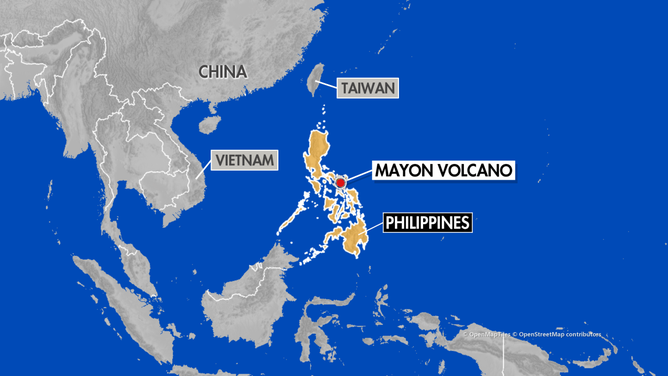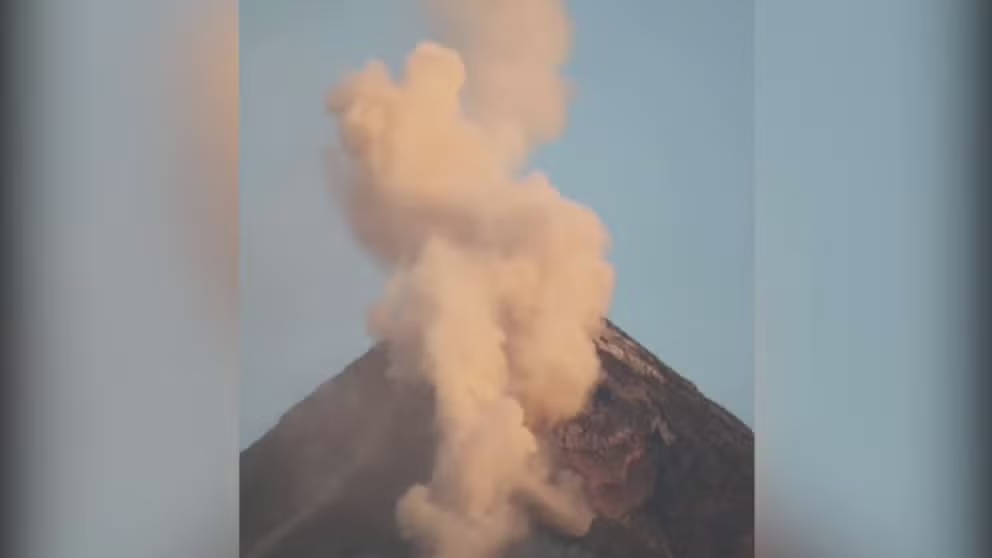Thousands who fled the Mayon Volcano in the Philippines may stay in shelters for months, reports say
Mayon Volcano is located near Legazpi City in the central Philippines province of Albay. It is the most active volcano in the country.
Watch: Lava flows from the Mayon Volcano in the Philippines
Video shows lava flowing from the Mayon Volcano in the Philippines as thousands of people are forced to flee their homes.
LEGAZPI CITY, Philippines – More than 13,000 people living in regions surrounding the awakening Mayon Volcano in the Philippines have fled to safety as lava continues to ooze from the fiery mountain, and those who have been forced to flee their homes may not be able to return for months.
According to Reuters, those who have evacuated have sought shelter in schools and community centers while they await the volcano’s next move.
"Based on our previous experiences, this volcanic activity may persist for a few months," Teresito Bacolcol, chief of the state volcanology and seismology agency, told a local radio station, according to Reuters.
According to the Smithsonian’s Global Volcanism Program, the Mayon Volcano, located near Legazpi City in the province of Albay, is the most active volcano in the Philippines.

Map showing location of Mayon Volcano in the Philippines.
(FOX Weather)
An increase in the volcano’s activity led to officials raising the alert level to Alert Level 3 (Increased Tendency Towards Hazardous Eruption) on June 8.
Since then, numerous earthquakes have been reported at the volcano.
TSUNAMI DETECTION ALONG THE PACIFIC RING OF FIRE GETS A BOOST FROM NEW SATELLITE TECHNOLOGY
Scientists have also noted a sharp increase in rockfall events and pyroclastic flows from the volcano’s lava dome, according to the Philippines Institute of Volcanology and Seismology (PHIVOLCS).
A lava dome is a mound-shaped feature inside the crater or mouth of a volcano, according to the U.S. Geological Survey (USGS). Lava domes form when magma builds up inside a volcano and pushes up on the crater floor, which sends debris down the volcano’s slopes in the form of rockfall.
HAWAII'S KILAUEA VOLCANO ERUPTION CONTINUES SENDING VOG DOWNWIND
Watch: Smoke billows out of Philippines volcano
As Mayon Volcano is showing increased signs of unrest this week, officials began to evacuate thousands of Filipinos living near the volcano. Located in Legazpi City in the province of Albay, Mayon is the most active volcano in the Philippines, according to the Smithsonian’s Global Volcanism Program. June 10, 2023.
On Tuesday, the PHIVOLCS reported one volcanic earthquake over the past 24 hours, as well as at least 221 rockfall events and one pyroclastic density current event, or pyroclastic flow. In an update, the PHIVOLCS said current hazards include rockfalls, landslides or avalanches, ballistic fragments, lava and pyroclastic flows, moderate-sized explosions and lahars.
YELLOWSTONE VOLCANO ERUPTION MORE COMPLEX THAN SCIENTISTS PREVIOUSLY THOUGHT, REPORT SAYS

Residents of Albay province in the Philippines are evacuated. June 9, 2023.
(Albay Police Provincial Office / FOX Weather)
A nearly 4-mile radius around the volcano had been declared a Permanent Danger Zone (PDZ), forcing thousands of people to flee their homes, and airspace has been restricted across the region.
Mayon is stirring days before the 32nd anniversary of the eruption of Mount Pinatubo in the northern Philippines. According to the USGS, the June 15, 1991, eruption of Pinatubo was the second-largest volcanic eruption of the 20th century.






